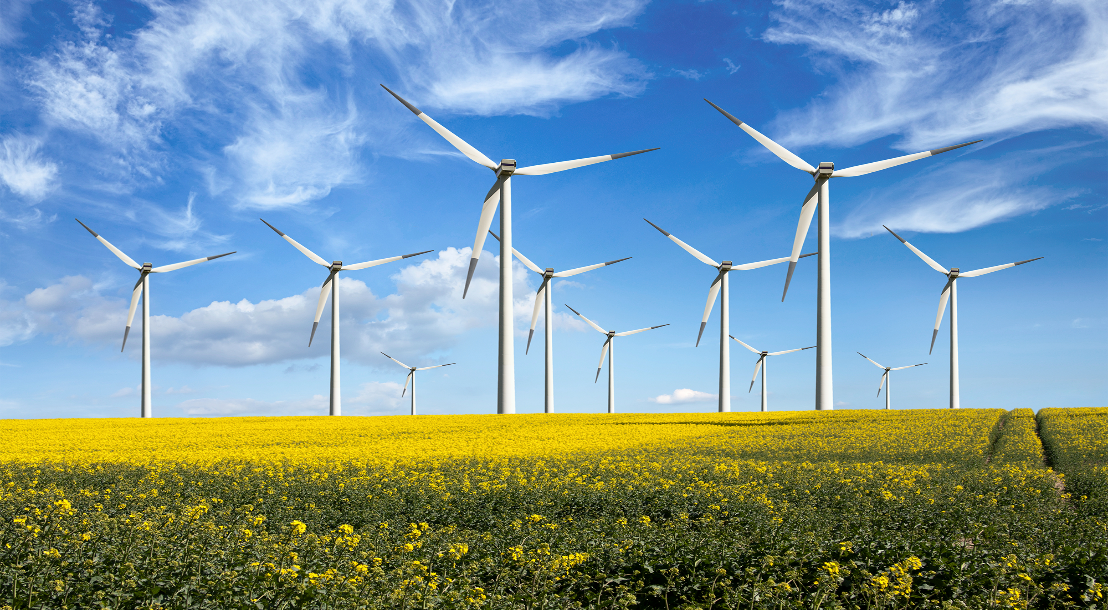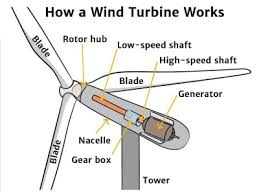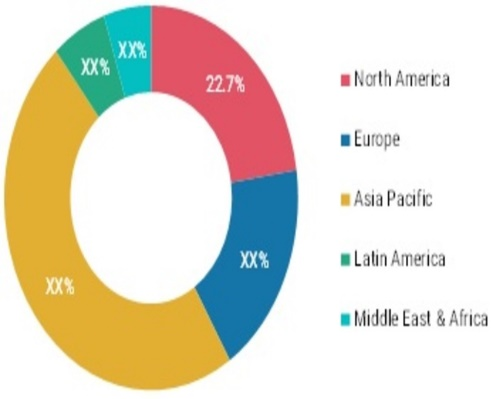
Wind Energy – It’s generation and future
Wind energy is a crucial and sustainable investment for future generations as it helps to convert the energy of an unrenewable resource like the wind into electricity. Wind producing farms with numerous wind turbines must be developed, either on land or offshore, in order to use the wind. In recent years, these enormous creatures have assimilated into the scenery, but do we understand how they function?
Describing wind energy
Wind energy is a form of power that is usually generated with the help of wind's force. But how? With the aid or assistance of a wind turbine, which effectively converts the kinetic energy of air currents into electrical energy. The rotor, which converts kinetic energy into mechanical energy, and the generator, which converts this mechanical energy into electrical energy, are the two basic mechanisms used to extract the energy. We're here narrating about an energy source that is secure, mature, efficient, and sustainable that is essential to the decarbonization of the global economy and the energy transition.
What process produces wind? The earth's surface is not evenly affected by solar radiation; where it is warmer, air always prefers to rise because it weighs less forming low-pressure areas; where it is colder, air tends to descend because it weighs more, developing high-pressure areas. The air travels as a result of the pressure differential, creating wind, a powerful element that can be exploited to produce energy.
How wind energy gets generated- Its characteristics
As we just narrated, a wind turbine is precisely necessary to harness the kinetic energy of the wind and transform it into electrical energy. The best way to utilize these enormous structures—which are typically between ninety and hundred thirty meters high— purely depends on how strong the wind is. As a result, wind farms that pool several wind turbines and make possible the production of huge amounts of this energy must be built in areas with a predominance of windy circumstances.
A vane on the nacelle is generally utilized to position the wind turbines so that they can face the direction of the wind properly. The three major components or factors of the wind turbine will then begin to rotate due to the pressure or force of the air currents:
The purpose of the rotor, which consists of three blades and a bushing connecting them, is to collect wind energy and transform it into rotational kinetic energy.
The multiplier's job is to raise the rotational speed from 30 revolutions per minute (rpm) to 1500 rpm. It is connected to the engine by a shaft.
The generator is the component that usually changes rotational mechanical energy into electrical energy.
Underground cables connect each of the wind turbines that make up a wind farm, and these cables then transport the electricity to a transformer substation. With the help of distribution networks of the numerous power generators, it is then delivered to residences, businesses, or educational institutions, among other destinations.
Variations of wind energy
Currently, depending on where the wind turbines are installed, there are two types of wind energy:
On-shore wind energy
Onshore wind energy uses wind farms on land to capture the wind and turn it into power. To achieve this, we erect wind turbines that can convert wind kinetic energy into usable power and transfer it to the distribution network.
Off shore wind energy
Offshore wind energy is created by utilising the wind's force as it blows across the open ocean, where there are no obstructions and it may travel farther and faster than on land. Mega-structures are put in place that are sat on the seabed and outfitted with the newest technological advancements in order to make the most of this resource.
Merits of wind energy
One of the world's fastest-growing energy sources is wind energy because it has several benefits. Researchers are attempting to resolve technical and socio-economic issues in support of a future with decarbonized power in order to further enhance the potential of wind energy and the benefits it provides to communities.
Wind energy produces well-paying jobs.
In all the fifty states, the United States wind sector employs more than 120,000 people, and that number is rising. The second fastest increasing occupation in the United States over the past ten years, according to the U.S. Bureau of Labor Statistics, is wind turbine service technician. By 2050, there might be hundreds of thousands more jobs in the wind industry, which offers jobs ranging from asset manager to blade fabricator.
A homegrown resource that supports U.S. economic expansion is wind electricity.
In 2021, more than 9% of the net energy produced in the nation was produced by wind turbines operating in all 50 states. The U.S. economy gained $20 billion from investments in new wind projects that same year.
Wind energy is economical.
One of the most cost-effective and cheap energy sources currently accessible is generated by utility-scale as well as land-based wind turbines. Moreover, as wind energy research and technology evolve, its cost-effectiveness continues to gradually rise.
Different environments are used by wind turbines.
In functioning landscapes with many uses including agriculture, wind energy generation works effectively. In rural or isolated places, such as farms and ranches or coastal and island villages, where high-quality wind resources are frequently found, wind energy is simple to integrate.
Challenges of wind energy
Other cheap energy sources must compete with wind energy. Wind and solar power projects are currently more economically competitive than gas, geothermal, coal, or nuclear power plants when evaluating the cost of energy connected with new power plants. However, in some places that are not sufficiently windy, wind projects might not be cost-competitive. Costs can be reduced even more with the use of cutting-edge technology, better manufacturing practices, and a deeper comprehension of the physics of wind farms.
Ideal wind settings are usually located in isolated areas. To meet demand, it is necessary to deliver electricity from wind farms to metropolitan areas, but installation difficulties must be overcome. The cost of increasing land-based wind energy might be greatly reduced by upgrading the nation's transmission network to connect regions with plentiful wind resources to major population centres.
Wind energy market insight
The market for wind energy was estimated to be worth USD 99.28 billion in 2021, and from 2022 to 2030, it is anticipated to increase at a CAGR of 6.5%. In the coming years, the market for wind power is expected to be driven by the growing need to switch from conventional to renewable energy sources. When compared to newly constructed coal or gas plants, solar and wind power generation are now thought to be more cost-effective than they were twenty years ago. Furthermore, it is anticipated that operating new wind and solar energy facilities would become more affordable in the coming years than maintaining coal or gas-fired ones.

